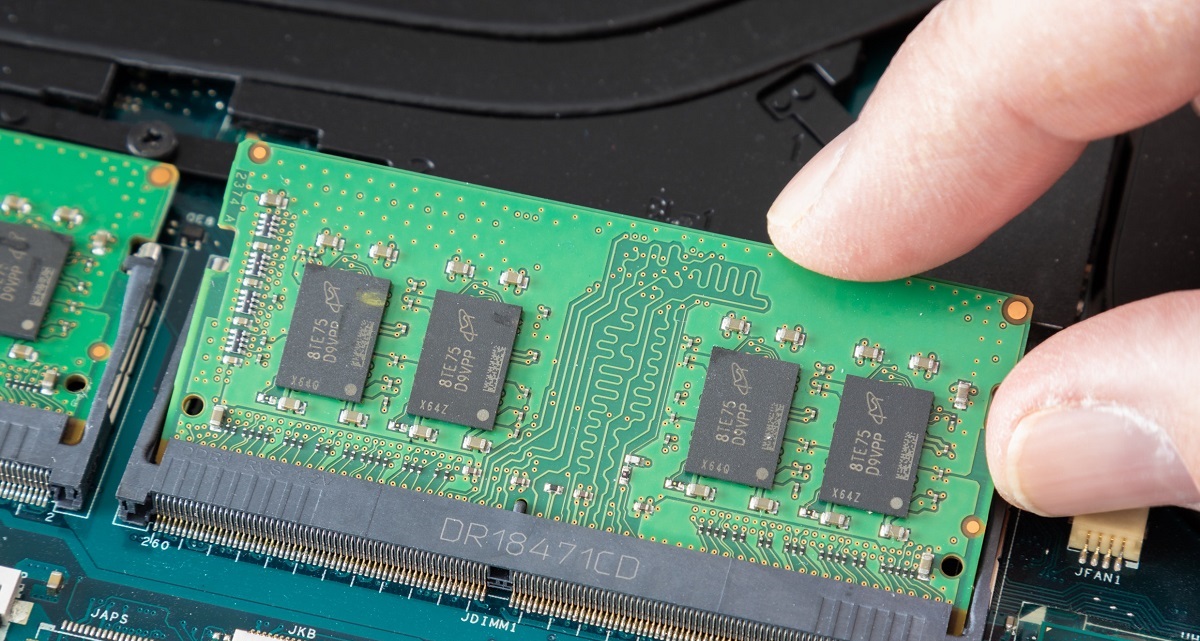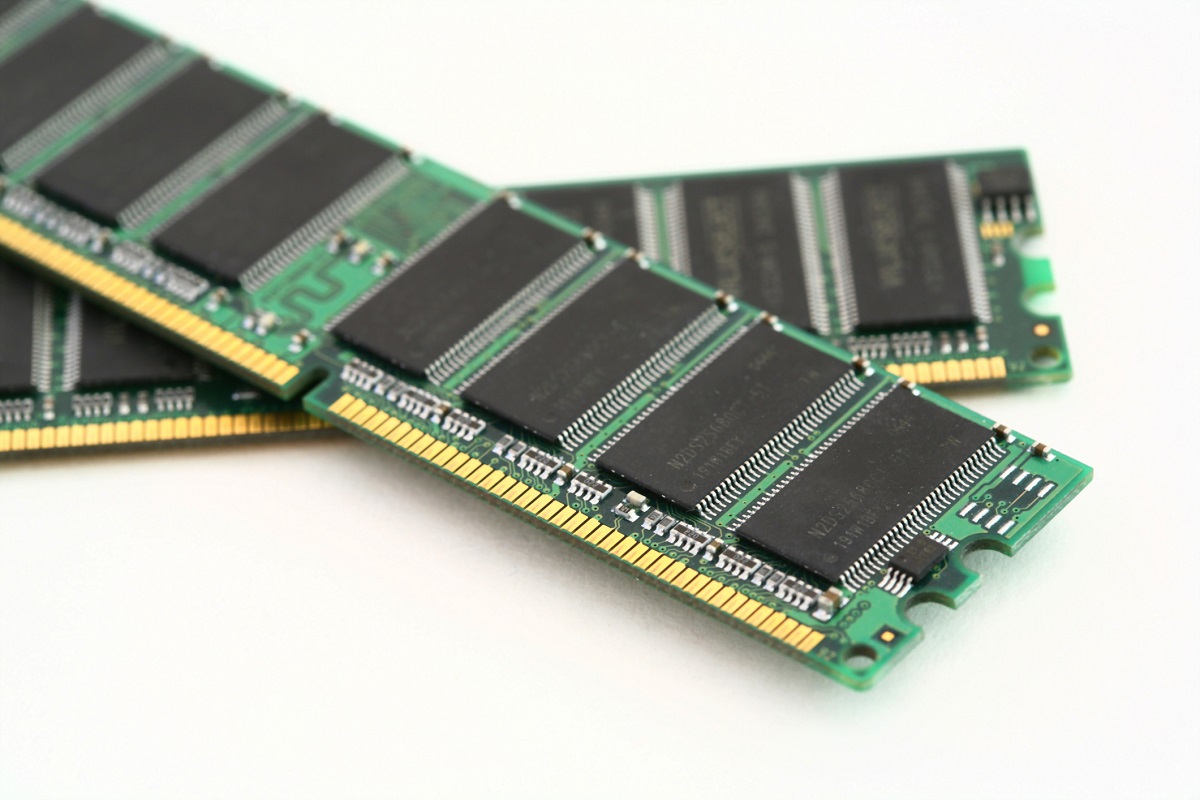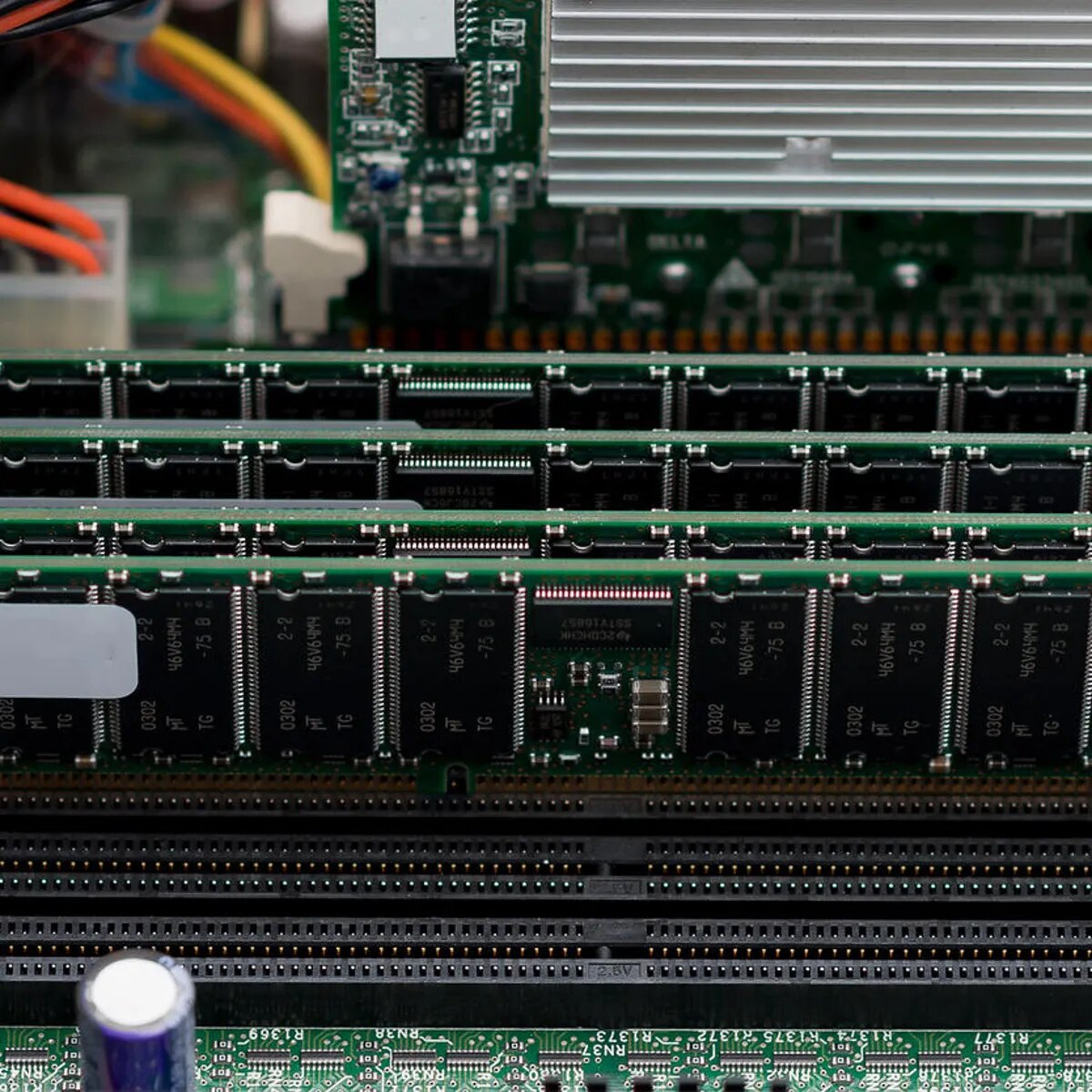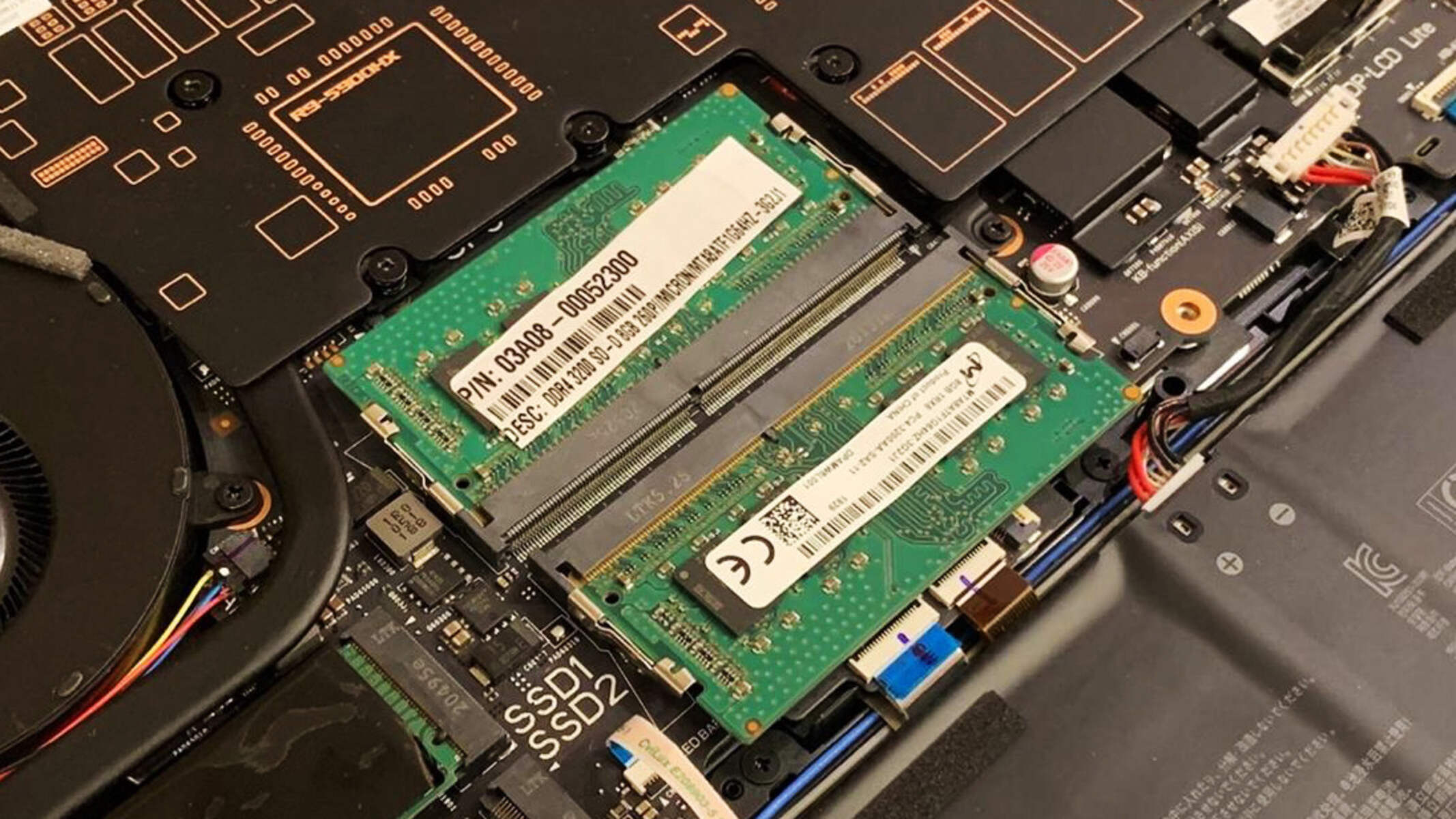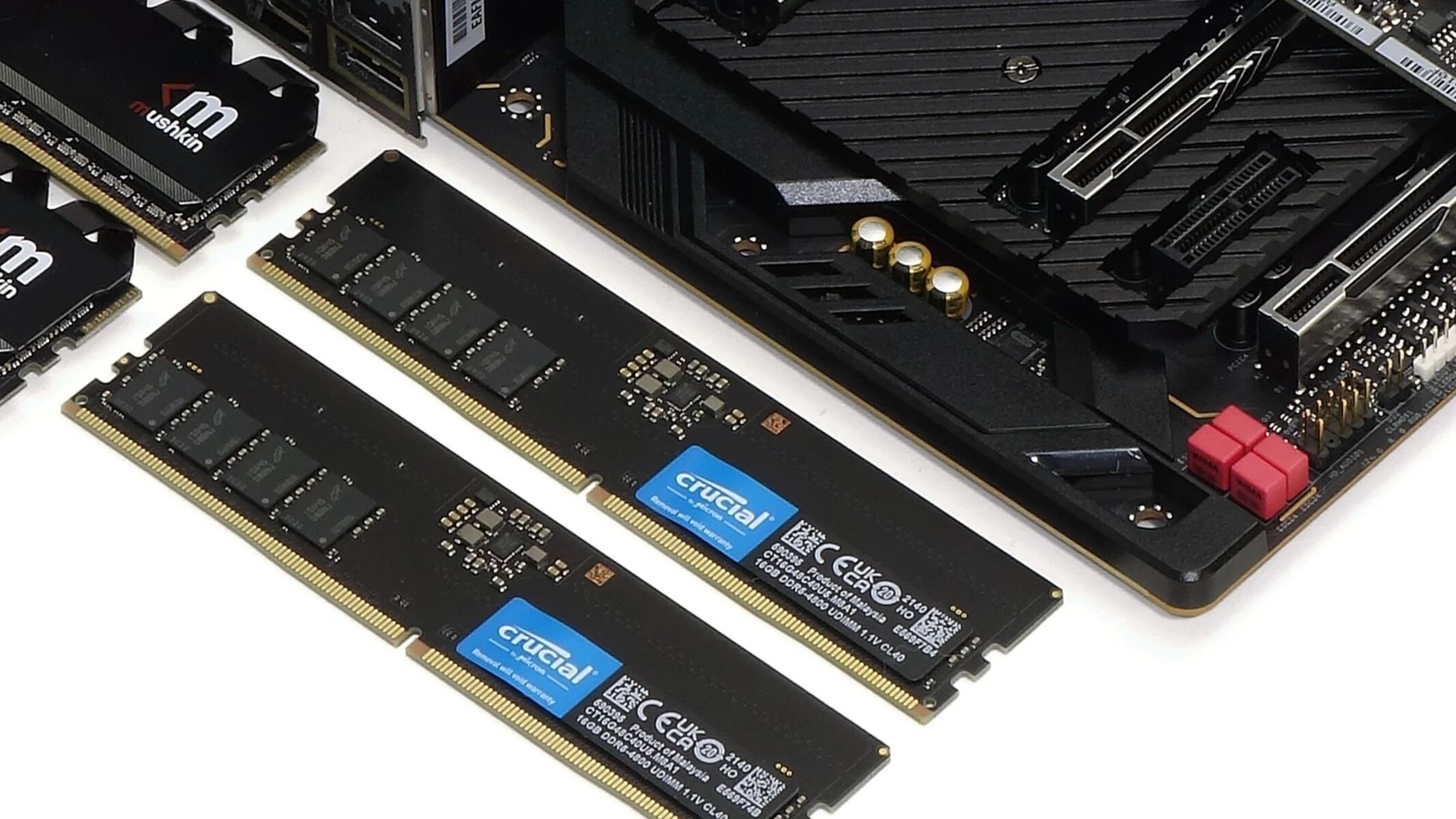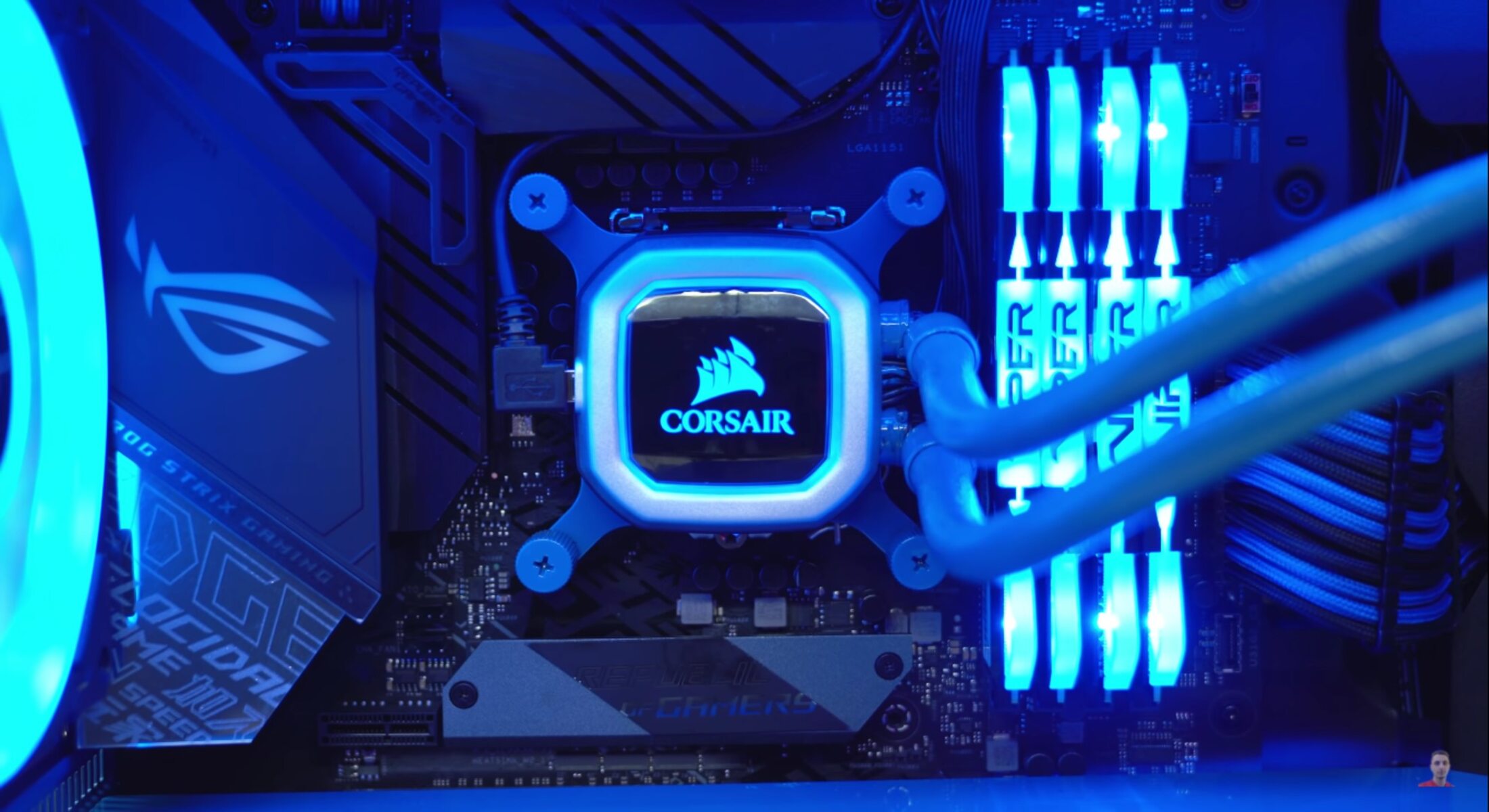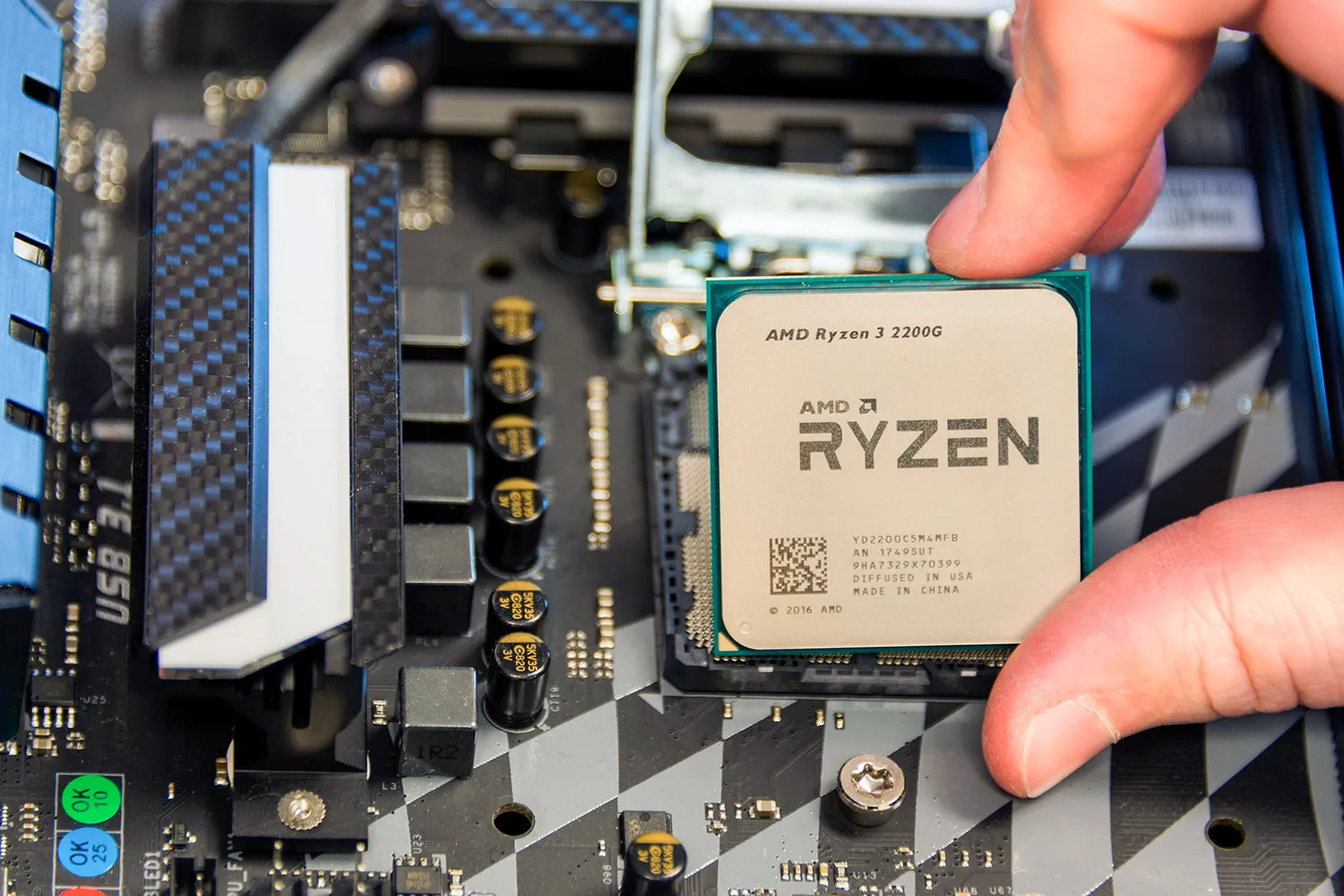Introduction
Welcome to the world of Windows 7 64-bit operating system! If you are wondering how much RAM this version of Windows uses and what you need to keep your system running smoothly, you’ve come to the right place. In this article, we will explore the RAM requirements for Windows 7 64-bit, discuss factors that can affect RAM usage, and provide you with tips for managing your RAM effectively.
RAM, short for Random Access Memory, is an essential component of any computer system. It serves as a temporary storage space for data that is actively being used by the operating system and various applications. The more RAM your system has, the smoother and faster it will perform, especially when running resource-intensive tasks like gaming or multitasking.
When it comes to Windows 7 64-bit, the RAM requirements are slightly higher compared to the 32-bit version. This is because the 64-bit architecture allows the operating system to access larger amounts of memory, which can be beneficial for users who require more memory-intensive applications or frequently work with large files.
However, it’s important to note that the amount of RAM you need for your system may vary depending on factors such as the type of applications you use and the complexity of your tasks. While Windows 7 64-bit can run on systems with minimal RAM, having more RAM will generally result in a smoother and more efficient overall experience.
In the following sections, we will delve deeper into the minimum and recommended RAM requirements for Windows 7 64-bit, explore the factors that can affect RAM usage, discuss how to monitor your RAM usage, and provide you with some useful tips for managing your RAM effectively. So, let’s dive in and find out how much RAM Windows 7 64-bit really uses!
Understanding RAM
Before we delve into the RAM requirements for Windows 7 64-bit, let’s take a moment to understand what RAM is and how it affects the performance of your computer.
RAM, or Random Access Memory, is a type of volatile memory that stores data that is actively being used by your computer’s operating system and running applications. It provides a fast and temporary storage space, allowing your computer to quickly access and manipulate data. The more RAM your system has, the more data it can hold in its memory, reducing the need for slower storage devices like hard drives or solid-state drives.
Think of RAM as a workspace for your computer. Just like a desk with limited space, having more RAM allows your computer to have a larger workspace, enabling it to handle more tasks simultaneously. With more RAM, your computer can store and access more data, resulting in faster and smoother performance, especially when running memory-intensive applications or multitasking.
However, it’s important to note that RAM is a temporary storage medium. When you turn off your computer, all data stored in RAM is lost. That’s why it’s recommended to save your work regularly and back up important data to non-volatile storage devices like hard drives.
It’s worth mentioning that in addition to the physical RAM installed in your computer, modern operating systems like Windows 7 64-bit also use virtual memory. Virtual memory is a combination of physical RAM and a portion of your computer’s hard drive or solid-state drive that acts as additional temporary storage when physical RAM is full. This allows your computer to continue running smoothly even when RAM demand exceeds the physical capacity.
Keep in mind that while virtual memory can help alleviate RAM constraints, it is generally slower than physical RAM since it relies on storage devices. Therefore, having a sufficient amount of physical RAM is still crucial for optimal system performance.
Now that we have a basic understanding of RAM, let’s explore the specific RAM requirements for Windows 7 64-bit in the next section.
RAM Requirements for Windows 7 64-bit
When it comes to running Windows 7 64-bit, the RAM requirements are slightly higher compared to the 32-bit version. While the 32-bit version can run on systems with as little as 1 GB of RAM, the 64-bit version requires a minimum of 2 GB of RAM to function properly.
However, it’s important to note that the minimum RAM requirements are just the starting point. In reality, if you want your system to perform well and handle everyday tasks smoothly, it is recommended to have at least 4 GB of RAM or more. This will ensure that your computer can run multiple applications simultaneously without experiencing sluggishness or performance issues.
If you’re planning to use memory-intensive applications like video editing software, CAD programs, or virtual machines, it’s advisable to have even more RAM. These resource-demanding tasks can benefit from having 8 GB or more of RAM, enabling faster processing and smoother performance.
Additionally, it’s important to consider future-proofing your system. As technology advances and software becomes more resource-intensive, having a sufficient amount of RAM will help ensure that your system remains capable of handling future updates and upgrades without experiencing performance issues.
While having more RAM can certainly benefit your system’s performance, it’s also important to note that simply adding more RAM won’t necessarily guarantee a significant improvement. The overall performance of your system depends on various factors, including the efficiency of other hardware components like the processor and storage devices.
Moreover, the way you use your computer and the applications you run also play a role in determining the optimal amount of RAM for your needs. If you primarily use your computer for basic tasks like browsing the web, sending emails, and word processing, 4 GB of RAM should be sufficient. However, if you are a power user who engages in resource-intensive tasks or runs multiple demanding applications simultaneously, then you may require more RAM to maintain smooth and efficient performance.
Now that we have a better understanding of the RAM requirements for Windows 7 64-bit, let’s explore some factors that can affect RAM usage in the next section.
Minimum and Recommended RAM
When considering the amount of RAM you need for your Windows 7 64-bit system, it’s important to differentiate between the minimum requirements and the recommended amount for optimal performance.
The minimum RAM requirement for Windows 7 64-bit is 2 GB. This is the bare minimum amount of RAM needed for the operating system to function properly. However, it’s essential to note that running a system with only 2 GB of RAM may result in sluggish performance, especially when running multiple applications simultaneously or engaging in memory-intensive tasks.
For a smoother and more responsive experience, it is recommended to have at least 4 GB of RAM. This amount of RAM allows your system to handle everyday tasks efficiently, ensuring that your applications run smoothly without any noticeable slowdowns. With 4 GB of RAM, you will also have enough headroom to comfortably multitask, switching between various applications or browser tabs without experiencing performance issues.
If you engage in more demanding tasks like gaming, video editing, or running virtual machines, you may benefit from having even more RAM. 8 GB of RAM is often considered a sweet spot for power users and enthusiasts. This amount of RAM provides ample memory for resource-intensive applications, allowing for faster processing and smoother performance. Additionally, it allows for smoother multitasking with multiple memory-consuming applications running simultaneously.
For professionals working with highly complex applications or large datasets, 16 GB or more of RAM may be necessary to ensure optimal performance. This includes tasks such as 3D rendering, advanced video editing, scientific simulations, or virtualization environments. Having higher amounts of RAM in these scenarios helps prevent bottlenecks and ensures that the system can handle the massive amounts of data involved without sacrificing performance.
It’s important to keep in mind that while having more RAM can improve your system’s performance, there may be other factors that can limit the overall performance, such as the capabilities of your CPU, the speed of your storage devices, and the efficiency of your graphics card. Therefore, it’s always recommended to have a well-balanced system where all components work harmoniously to achieve optimal performance.
Now that we have discussed the minimum and recommended RAM for Windows 7 64-bit, let’s explore the various factors that can affect RAM usage in the next section.
Factors Affecting RAM Usage
There are several factors that can influence how much RAM your Windows 7 64-bit system utilizes. Understanding these factors can help you optimize your system’s performance and make informed decisions about managing your RAM effectively. Let’s explore some of the key factors:
1. Running applications: The primary factor that affects RAM usage is the number and type of applications running on your system. Memory-intensive software, such as graphic design programs or video editing software, can consume a significant amount of RAM, especially when working with large files or complex projects. Similarly, running multiple applications simultaneously can increase RAM usage, as each application requires its own memory allocation.
2. Multitasking: Engaging in multitasking, where multiple applications are running simultaneously, can increase RAM usage. Switching between applications or keeping numerous browser tabs open can gradually consume more memory, especially if the applications or tabs are memory-intensive. It’s important to be mindful of the number of applications and browser tabs open to help manage RAM resources efficiently.
3. File sizes: Dealing with large files, such as high-resolution images, videos, or 3D models, can significantly impact RAM usage. When working with these files, the computer needs to load them into memory to perform operations effectively. The larger the file size, the more memory it will occupy, potentially resulting in higher RAM usage.
4. System resources: Windows 7 64-bit itself requires a certain amount of RAM to function efficiently. The operating system uses RAM for various tasks, such as managing processes, handling system services, and caching frequently accessed data. It’s important to consider the RAM requirements of the operating system itself when determining the ideal amount of RAM for your system.
5. Background processes: Many background processes and services run on your computer, even when you’re not actively using specific applications. These processes can have an impact on overall RAM usage. It’s important to periodically review and optimize the processes running in the background to ensure that unnecessary or resource-intensive processes are minimized.
6. Virtualization: If you frequently use virtualization software, such as running virtual machines or emulators, it’s important to consider the RAM requirements for each virtual machine. Each virtual environment requires a dedicated portion of RAM, which can quickly add up if you run multiple instances concurrently.
By considering these factors and optimizing your system accordingly, you can effectively manage your RAM usage and ensure that your Windows 7 64-bit system performs optimally for your specific needs. In the next section, we will discuss how to monitor your RAM usage in Windows 7 64-bit.
Unused RAM in Windows 7 64-bit
Unused or free RAM in Windows 7 64-bit refers to the portion of memory that is currently not being used by any running programs or system processes. Many users wonder if having unused RAM is wasteful or if it can be utilized to improve system performance. Let’s explore the concept of unused RAM in more detail:
1. Windows 7 memory management: Windows 7 64-bit utilizes a sophisticated memory management system that aims to optimize the use of RAM efficiently. It uses techniques like caching frequently accessed data and preloading commonly used applications to enhance system performance. As a result, you may often observe that a portion of your installed RAM appears as unused or free.
2. Standby memory: In Windows 7 64-bit, a portion of unused RAM may be classified as standby memory. Standby memory contains data that was previously read from storage devices but is kept in memory to speed up future access. It allows for faster retrieval of frequently used data, such as recently accessed files or applications. Standby memory is considered as a type of cache and will be freed up when needed for active processes.
3. Benefits of unused RAM: Having unused RAM in your system is not necessarily a waste. It provides headroom for launching new applications or running memory-intensive tasks without the need for the operating system to continuously swap data between RAM and slower storage devices. This results in smoother multitasking and faster overall system performance.
4. Dynamic memory allocation: Windows 7 64-bit dynamically allocates system resources, including RAM, based on the needs of running processes. As you launch new applications or perform memory-intensive tasks, the operating system adjusts the allocation of RAM accordingly. Unused RAM will be utilized when necessary to accommodate the increased demand.
5. Monitoring RAM usage: To get a better understanding of how your system utilizes RAM, you can use built-in Windows tools or third-party applications to monitor memory usage. Tools like Task Manager or Resource Monitor provide real-time information about the memory usage of running processes, allowing you to identify any potential bottlenecks or memory-hungry applications.
It’s important to note that having a certain amount of unused RAM is considered normal and can actually enhance system performance. However, if you consistently observe a large portion of unused RAM despite running memory-intensive tasks, it may indicate an issue or potential inefficiencies in memory management. In such cases, troubleshooting steps like updating drivers or checking for memory leaks in applications may be necessary.
Now that we have a better understanding of the concept of unused RAM in Windows 7 64-bit, let’s move on to the next section, where we will explore how to monitor RAM usage in more detail.
Monitoring RAM Usage in Windows 7 64-bit
Monitoring your RAM usage in Windows 7 64-bit can provide valuable insights into how your system utilizes memory resources and help you identify any potential performance issues. Fortunately, Windows provides built-in tools that allow you to monitor and analyze RAM usage. Let’s explore some of these tools:
1. Task Manager: Task Manager is a powerful built-in utility in Windows that allows you to monitor various system parameters, including RAM usage. To access Task Manager, simply right-click on the taskbar and select “Task Manager” or press Ctrl+Shift+Esc. In the Task Manager window, navigate to the “Performance” tab, where you can view real-time graphs and detailed information about your RAM usage, including total memory, available memory, and resource usage by running processes.
2. Resource Monitor: Resource Monitor is another useful tool available in Windows 7 64-bit for monitoring system performance, including RAM usage. To access Resource Monitor, open Task Manager and click on the “Resource Monitor” button at the bottom. In the Resource Monitor window, navigate to the “Memory” tab to view detailed information about your RAM usage, including active processes, memory hard faults, and more.
3. Performance Monitor: Performance Monitor is a more advanced tool in Windows that enables you to monitor and analyze various system parameters, including RAM usage, over an extended period. To access Performance Monitor, open the Run dialog by pressing Win+R and then type “perfmon” and hit Enter. In the Performance Monitor window, you can create custom performance counters and log data related to RAM usage for further analysis.
4. Third-party applications: There are also numerous third-party applications available that provide more advanced features for monitoring RAM usage. These applications often offer more detailed insights, additional customizable options, and alerts for excessive memory usage. Some popular third-party tools include HWiNFO, Speccy, and CPU-Z.
By regularly monitoring your RAM usage, you can identify any abnormal spikes or consistently high memory consumption by specific processes. This information can help you diagnose memory leaks, memory-hungry applications, or potential inefficiencies in your system. Additionally, monitoring RAM usage can help you make informed decisions about upgrading your RAM if you consistently run into memory constraints.
Remember to consider RAM usage in conjunction with other system parameters, such as CPU usage, disk activity, and network utilization, to have a comprehensive understanding of your system’s performance. This holistic approach allows you to identify any performance bottlenecks and make necessary adjustments to optimize your system’s overall efficiency.
Now that we have explored how to monitor RAM usage in Windows 7 64-bit, let’s move on to the next section, where we will provide you with some helpful tips for managing your RAM effectively.
Tips for Managing RAM in Windows 7 64-bit
Managing your RAM effectively is crucial for optimizing the performance of your Windows 7 64-bit system. By following these practical tips, you can ensure that your RAM is allocated efficiently and that your system runs smoothly:
1. Close unnecessary applications: Running multiple applications simultaneously can consume a significant amount of RAM. To free up memory resources, close any unnecessary applications that are running in the background. This will help reduce RAM usage and improve system performance.
2. Limit startup programs: Many applications automatically launch during system startup, which can lead to increased RAM usage. Review and disable any unnecessary startup programs to prevent them from consuming valuable memory resources. You can do this by using the “Startup” tab in Task Manager or by utilizing specialized software such as CCleaner.
3. Manage browser tabs and extensions: Web browsers can be memory-intensive, especially when you have multiple tabs open or numerous extensions installed. Limit the number of open tabs and disable or remove any unnecessary browser extensions to reduce RAM usage and improve browser performance.
4. Use lightweight applications: Consider using lightweight alternatives or slimmed-down versions of software when possible. These applications tend to have lower memory requirements, allowing your system to allocate more RAM to other tasks. For example, you can use lightweight text editors instead of resource-heavy word processors.
5. Adjust visual effects: Windows 7 offers various visual effects that can consume additional system resources, including RAM. Consider disabling or reducing these visual effects through the “Performance Options” settings in the Control Panel. This can help free up RAM and improve system responsiveness.
6. Manage virtual memory settings: Virtual memory, which uses part of your hard drive as additional memory, can impact overall system performance. Ensure that your virtual memory settings are properly configured. Ideally, it is recommended to let Windows manage the virtual memory settings automatically. However, if needed, you can manually adjust the virtual memory allocation in the “Advanced System Settings” section of the Control Panel.
7. Upgrade your RAM: If you consistently encounter high RAM usage and your system struggles to keep up with your daily tasks, consider upgrading your RAM. Increasing the amount of RAM in your system can significantly improve performance, allowing for smoother multitasking and the ability to run more memory-intensive applications simultaneously.
8. Regular system maintenance: Performing regular system maintenance tasks, such as disk cleaning and defragmenting, can help optimize your system’s overall performance. This includes removing unnecessary files, clearing temporary files, and ensuring that your hard drive is organized and optimized. By keeping your system clean and efficient, you can minimize the strain on your RAM.
By implementing these tips, you can effectively manage your RAM in Windows 7 64-bit to ensure optimal performance and a smoother computing experience. Remember that finding the right balance between system resources and your computing needs is key to maximizing efficiency.
Now that we have discussed tips for managing RAM, let’s conclude our article with a summary of the key points we have covered.
Conclusion
In conclusion, understanding and managing RAM usage is essential for optimizing the performance of your Windows 7 64-bit system. By considering the RAM requirements, monitoring usage, and implementing effective management strategies, you can ensure that your system runs smoothly and efficiently.
We explored the RAM requirements for Windows 7 64-bit, which include a minimum of 2 GB but ideally 4 GB or more for optimal performance. We also discussed the factors that can affect RAM usage, such as running applications, multitasking, file sizes, system resources, and virtualization.
To effectively monitor your RAM usage, Windows provides built-in tools like Task Manager, Resource Monitor, and Performance Monitor. These tools allow you to analyze real-time and historical data, helping you identify any bottlenecks or memory-hungry applications.
We provided practical tips for managing your RAM in Windows 7 64-bit, including closing unnecessary applications, limiting startup programs, managing browser tabs and extensions, using lightweight applications, adjusting visual effects, managing virtual memory settings, and considering RAM upgrades when necessary.
Remember, managing RAM is just one aspect of optimizing your system’s performance. It’s important to maintain a balanced approach, considering other hardware components, software efficiency, and regular system maintenance.
By implementing these strategies, you can ensure that your Windows 7 64-bit system operates at its full potential, providing you with a smoother user experience and allowing you to run memory-intensive applications with ease.
We hope that this article has provided you with valuable insights and guidance on effectively managing RAM in Windows 7 64-bit. Now it’s time to apply these tips and enjoy a more efficient and responsive computing experience!







